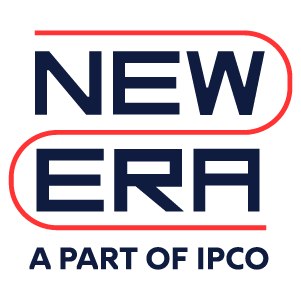The following is part one of a series of 3 blogs that will go through a white paper written by New Era Converting Machinery’s Bob Pasquale and Tom Lombardo. The white paper is titled “Design Considerations in Solvent Vs. Water Based Coating Equipment.”
Part 1 will offer an overview of the entire paper and what to expect in coming blogs. Part 2 will discuss how to design equipment to address solvent flammability and operator health. Part 3 finishes with design considerations for emissions, what drying equipment differentiation there is between the two, and how to resist corrosion, as well as a short conclusion.
—–
PART 1: Introduction and Background
INTRODUCTION:
There are many factors that must be considered when designing, fabricating, installing and operating a coating line used for the application of solvent based coatings. This paper will discuss many of these requirements and how they compare to a water based coating system. Included is a discussion of how the areas that require special design are established and what special considerations are required to address them.
BACKGROUND:
Coatings that are applied to webs take many forms including solvent based, water based and 100% solids. In this paper we focus on those coatings that are either solvent based or water based (though much of what is said about water based coatings would also apply to 100% solid coatings). By definition these coatings consist of particles suspended in a liquid carrier, with a solvent, or combination of solvents, being the carrier in the solvent based coatings and water being the carrier in the water based coatings.
There are many advantages to coatings that are solvent based when compared to water based. They are typically much easier to apply a full/complete covering with (often referred to as wetting out). The solvents typically take much less energy to remove, allowing for lower drying temperatures, shorter dryers and/or faster speeds. In the case of solvent based adhesives, these coatings typically have better performance characteristics such as higher shear/peel strength and greater moisture resistance.
However, there are significant disadvantages associated with the use of these solvents. They contain harmful VOCs (Volatile Organic Compounds) which are released into the atmosphere. These VOCs have both short term adverse health effects including irritation to the skin, eyes, nose and throat, headaches and nausea, and long term effects including damage to the liver, kidneys, lungs and central nervous system. In addition to these health risks, the use of solvents present an additional risk based on their flammability.
Therefore, when building equipment for use with solvents, these risks must be addressed by the design. For purposes of this paper we will group these risks in three categories. The equipment design must address the flammability/explosive issue. It also needs to address the exposure of the operators to the solvents. Finally, it needs to address the release of the VOCs into the environment.
For the purpose of this paper we will focus on the design of the coating equipment and associated machinery, not the drying equipment. Though we will briefly touch upon the drying equipment, the design of the systems for the drying of solvent based coatings verses water based coatings is a topic unto itself.
One last area that we address is the design of the equipment to prevent excess corrosion when exposed to the coatings.
###
*Check back soon for parts 2 and 3!*













 Downloadable Brochures in PDF Format
Downloadable Brochures in PDF Format